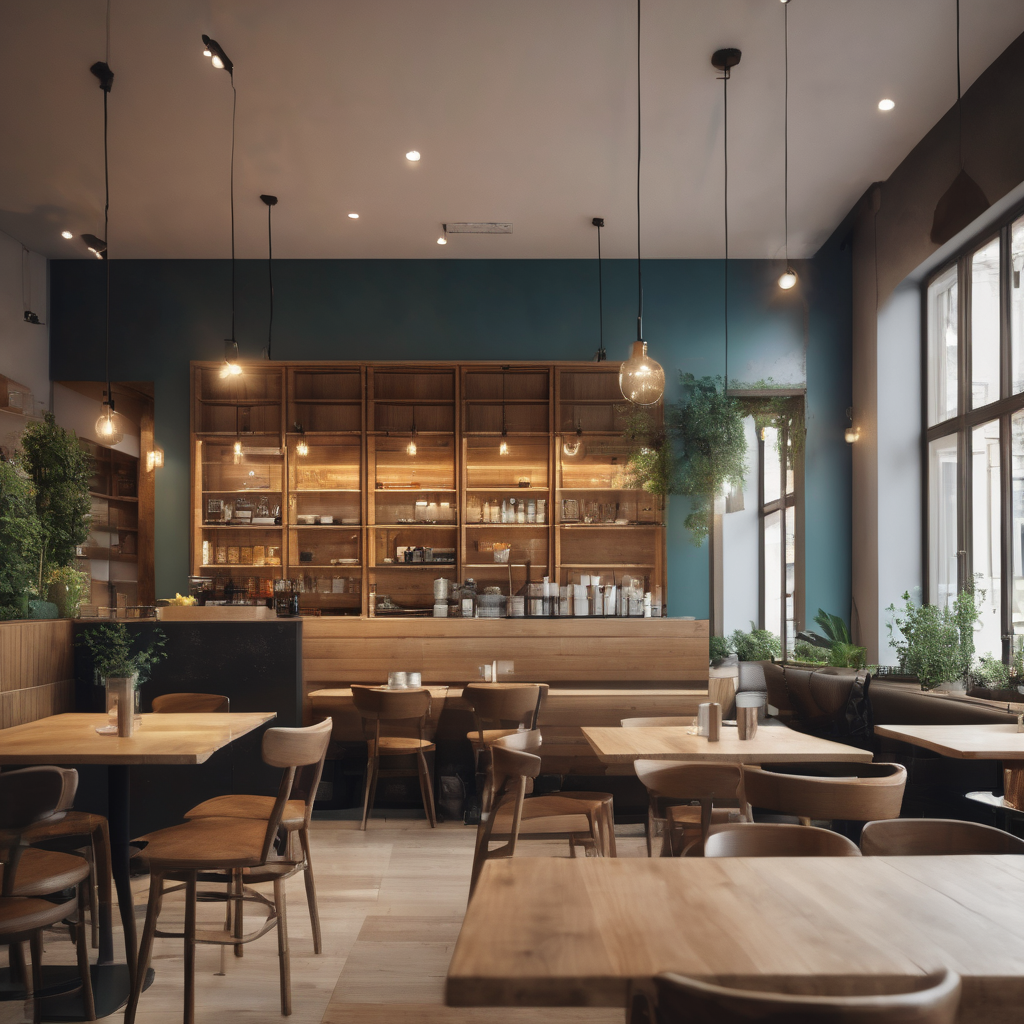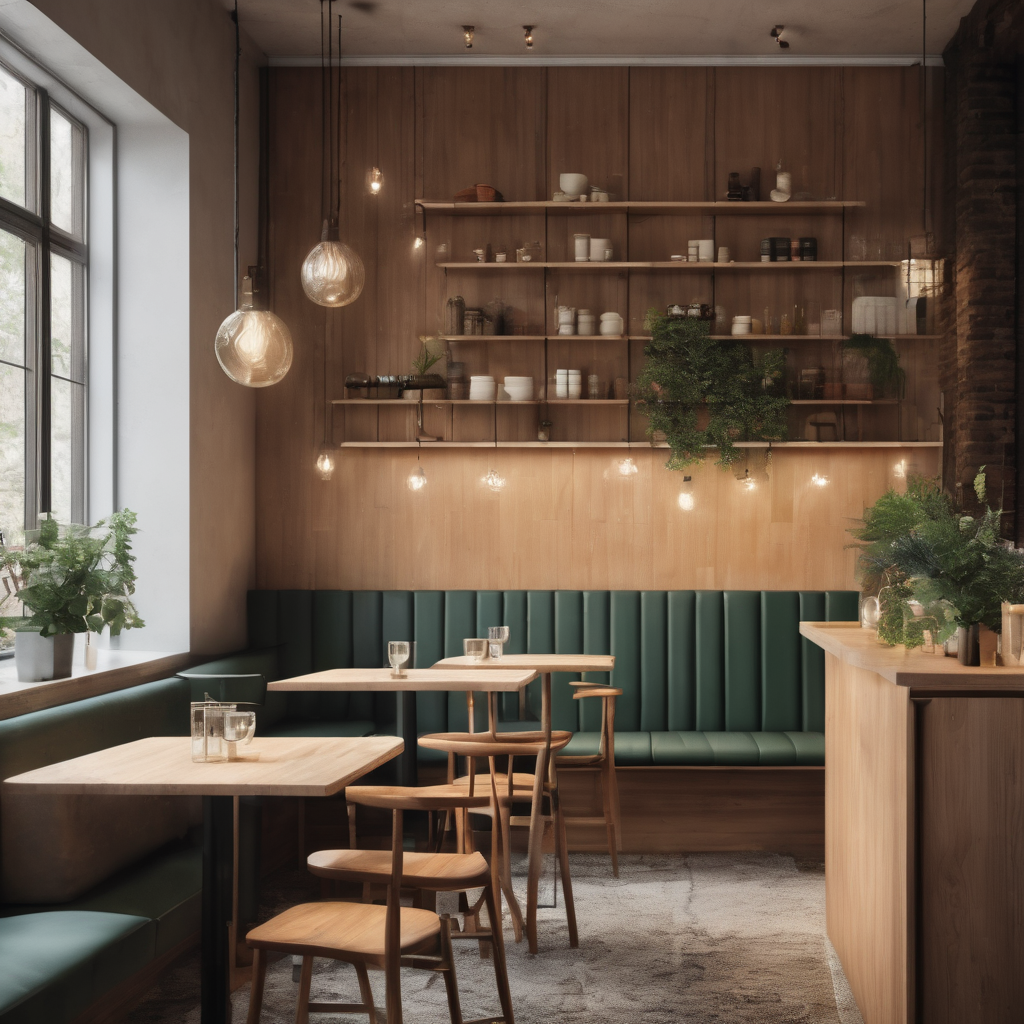The Creative Harmony: AI-Generated 3D Visuals in Interior Design
The world of interior design has witnessed a significant transformation in recent years, thanks to the rapid advancement of artificial intelligence (AI) and its application in various industries. One of the most intriguing developments is the use of AI generators to produce stunning 3D visuals for interior design projects. While these AI tools have the potential to streamline the design process and enhance visualisation, many in the industry worry about the possibility of AI taking over their jobs. In this blog, we will explore the integration of AI into interior design, emphasise the unique aspects of human expertise, and explain why AI is not poised to replace interior designers but rather enhance their capabilities.
AI Generated image for cafe interior
The Rise of AI-Generated 3D Visuals
AI-powered bot generators have unlocked new possibilities in interior design by automating the creation of 3D visuals and rendering. These tools use algorithms to quickly generate lifelike representations of interior spaces, helping designers and clients visualise concepts and ideas more effectively. AI can generate multiple design variations, experiment with colour schemes, and even predict trends based on extensive data analysis.
The Impact on the Design Industry
1. Enhanced Visualisation:
AI-generated 3D visuals provide designers with a powerful tool to communicate their ideas to clients. These visuals enable clients to see the proposed designs in a realistic manner, fostering a deeper understanding of the project's potential outcome.
AI Generated image for cafe interior
2. Time and Cost Efficiency:
By automating the rendering process, AI can, in theory, significantly reduce the time and costs associated with creating 3D visuals, allowing designers to focus on the creative aspects of their work.
3. Exploration of Design Alternatives:
AI can swiftly generate multiple design alternatives, helping designers experiment with different concepts, layouts, and materials.
Why AI Won't Replace Interior Designers
1. The Human Connection:
Interior design is as much about the human connection as it is about aesthetics. Interior designers establish a rapport with clients, understanding their needs, preferences, and lifestyles. They act as mediators between the client's vision and the final design, ensuring that the space truly reflects the client's personality and aspirations. AI cannot replicate this essential aspect of the profession.
AI Generated image for a ‘doggy cafe’
2. Creativity and Innovation:
AI may excel at generating visuals based on data and patterns, but it lacks the creativity, intuition, and emotional intelligence that human designers bring to the table. Interior designers infuse a unique artistic flair into their work, crafting designs that are not just aesthetically pleasing but also emotionally resonant.
3. Problem Solving:
Interior designers are problem solvers, adept at addressing unique challenges that each project presents. They consider factors such as space constraints, structural limitations, and budgetary constraints while designing functional and visually appealing spaces. AI, while helpful, cannot replace the problem-solving skills and adaptability of a human designer.
4. Personalised Design:
Every client is different, and their design preferences are often deeply personal. Interior designers excel at creating customised solutions that cater to the individual tastes and needs of their clients. AI may generate generic designs, but it cannot capture the essence of a client's personality and lifestyle as effectively as a human designer.
AI Generated image for a cafe interior. Look closely at the bar with the booth seating. An example of why AI cannot replace Interior Designers
In Summary:
AI-generated 3D visuals have undoubtedly revolutionised the interior design industry, offering powerful tools to streamline the design process and enhance visualisation. However, it is crucial to understand that AI is a tool, not a replacement for the expertise and creativity that human interior designers bring to the table. The future of interior design lies in a harmonious collaboration between humans and AI, where designers use technology to augment their capabilities and create exceptional, personalised, and emotionally resonant spaces that reflect the unique essence of each client. The connection, understanding, and creative intuition that interior designers offer are irreplaceable and will continue to define the industry's success in the years to come.




